In a shared office or coworking space, it’s not unusual to come across a broken office chair that wobbles, leans a little too far back, or just won’t adjust the way it should. And while it might seem like a small issue, a broken office chair can quickly turn into a big frustration, especially when it disrupts your focus or leaves you hunting for a replacement. Whether you’re a regular desk user or just passing through for the day, knowing how to handle these situations can help keep your workspace safe, comfortable, and fair for everyone.
Key Takeaways:
- Report a broken chair right away to management or staff to help keep the space safe and functional.
- Avoid using or leaving unsafe chairs out and clearly mark or remove them to prevent accidents.
- Only try minor fixes if safe, but leave complex repairs to professionals to avoid injury or further damage.
In this article, we’ll walk through practical steps you can take when you run into a broken chair, plus tips for keeping things running smoothly in a shared environment.
Common Problems with Office Chairs in Shared Spaces
Office chairs in shared spaces endure constant use and various adjustments, making them prone to certain issues.
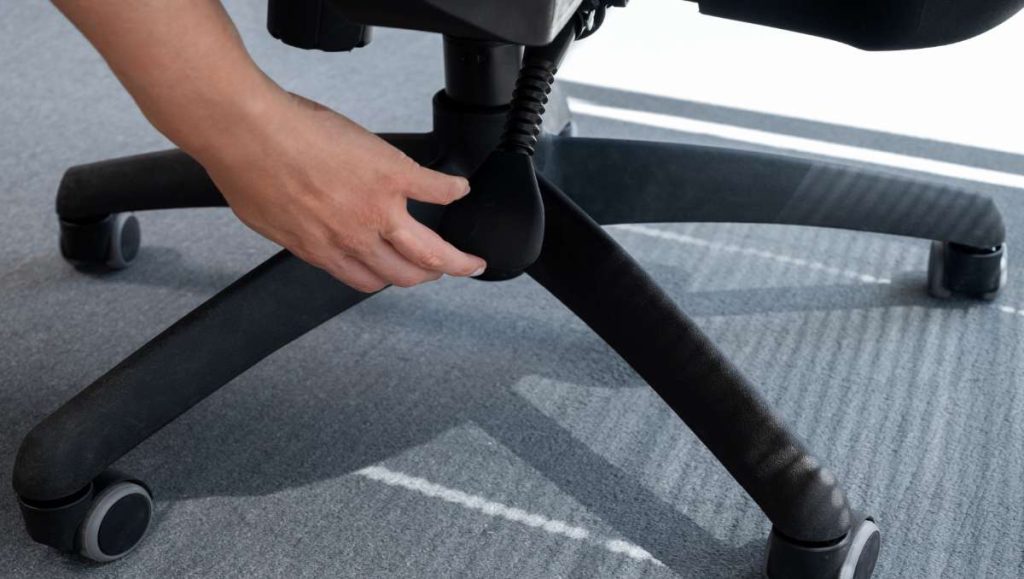
Loose Armrests or Wheels
Armrests can become wobbly due to repeated pressure as users lean on them to get in and out of the chair, or simply from frequent adjustments. Similarly, chair wheels, or casters, can loosen or break off entirely due to constant movement across different floor surfaces.
Malfunctioning Height Adjustments
Another common issue is a malfunctioning height adjustment mechanism. The pneumatic gas cylinder, which allows users to raise or lower the seat, can fail over time due to continuous compression and decompression by numerous individuals of varying weights.
Wobbly or Unstable Bases
Wobbly or unstable bases are a significant concern for shared office chairs. The chair’s base, typically a five-star design, can become compromised if its legs bend, crack, or if the connection points to the gas cylinder loosen. This instability often arises from excessive weight placed on the chair, improper assembly, or rough handling by users.
What to Do When You Encounter a Broken Office Chair
In a shared office or coworking space, the right course of action for a broken office chair typically involves notifying the building management or coworking space operator, who is responsible for handling repairs or arranging a replacement. That said, every space has its own way of managing maintenance issues. Some use digital ticketing systems, others rely on direct communication with a community manager or front desk staff.
Above all, if a chair is clearly unsafe—wobbly, missing parts, or collapsing under minimal weight—reporting it immediately can prevent someone else from getting injured or causing further damage.
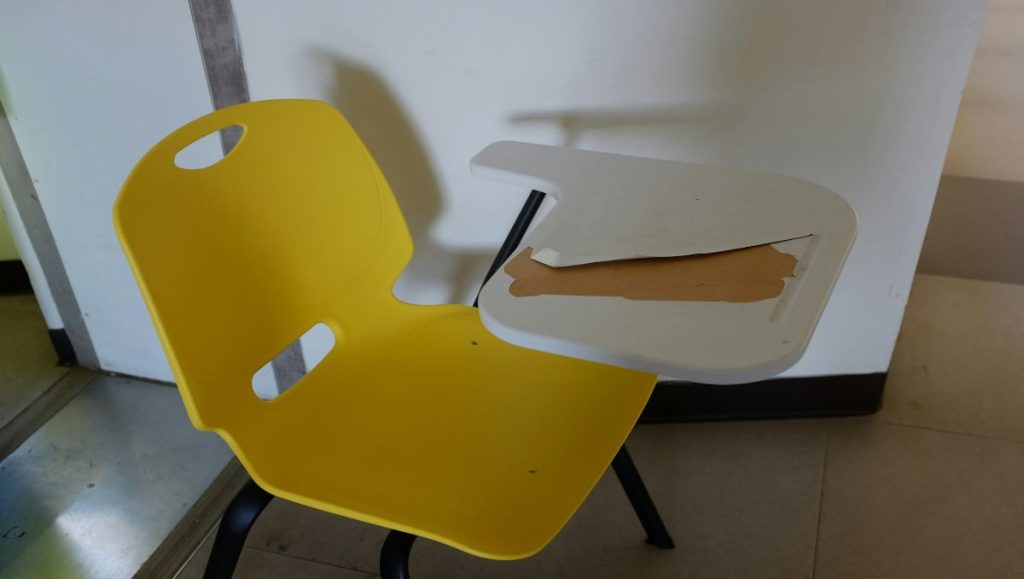
Here’s a more detailed breakdown of how to deal with a broken office chair in a shared space:
1. Assess the Issue Without Using the Broken Office Chair
First things first: don’t try to “test” a broken chair. If it’s visibly damaged (tilted base, loose armrest, or a faulty height adjustment), it’s safer to avoid sitting in it altogether. A quick visual check is usually enough to tell if the chair is unusable or dangerous.
2. Remove It From Circulation If Possible
If the chair is clearly broken or unsafe, try to move it out of the way so others don’t unknowingly use it. Tuck it into a corner, mark it with a visible note (even a quick “Broken—Do Not Use” sticky will do), or lean it against a wall if it’s unsteady.
3. Report the Problem Promptly
The most important step: let someone know. In coworking spaces, this usually means speaking with the front desk or staff. In a corporate shared office, it might involve emailing facilities or using an internal reporting system.
4. Include Specific Details of Broken Office Chair When Reporting
A vague report like “chair broken” can slow things down. If possible, include where the chair is located (e.g., “desk 14 near the window”), what seems to be wrong with it, and whether it poses a safety risk.
5. Follow Up If Necessary
If the chair remains in use or hasn’t been moved after a day or two, it’s okay to follow up politely. A gentle reminder helps keep the space functional and safe.
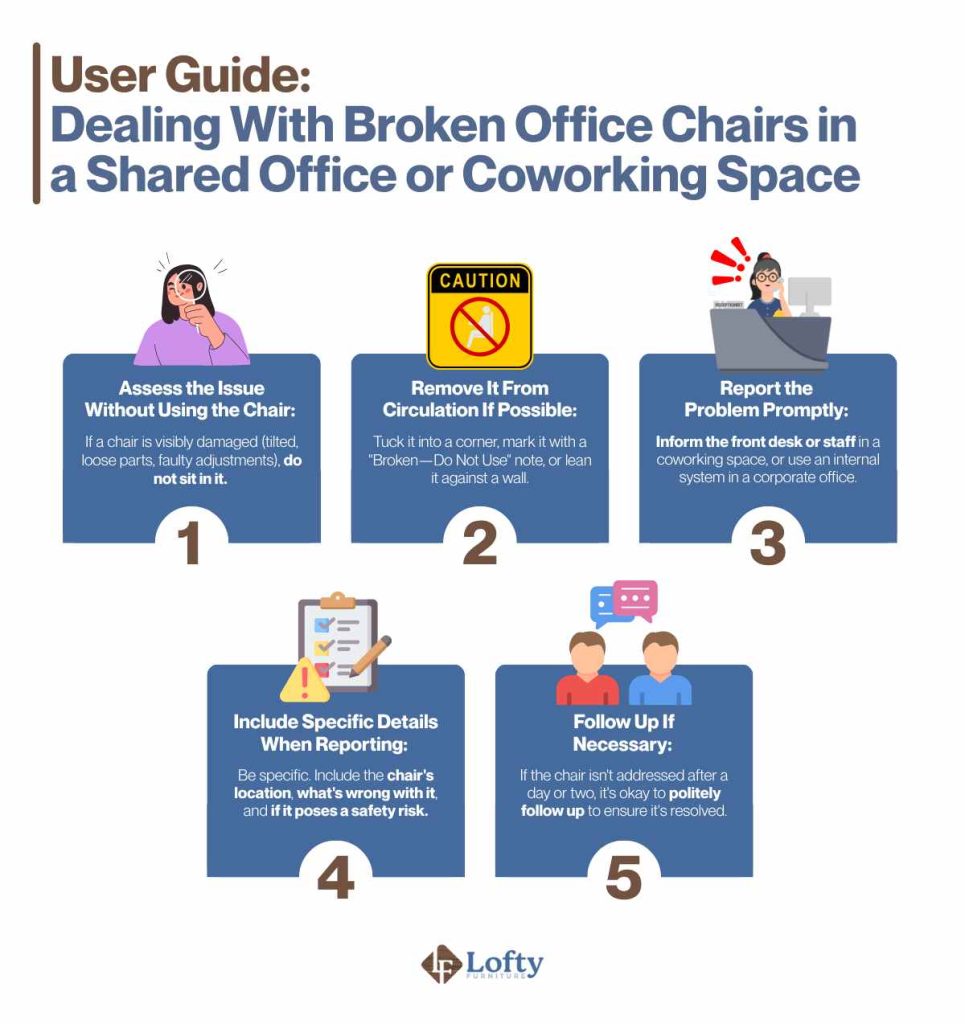
How to Report or Request Broken Office Chair Repairs
When a shared office chair requires repair, knowing the proper reporting procedure is crucial for a swift resolution. Typically, the first point of contact will be your office’s facilities department, administrative staff, or, in a coworking space, the community or support team. When submitting your report, be as detailed as possible to expedite the repair process. Include the specific location of the faulty chair, a clear description of the problem, and if possible, a photo of the damage.
After submitting your report, it’s a good practice to follow up if you don’t see any action within a reasonable timeframe. If the issue persists after your initial follow-up, consider escalating the concern to your direct manager or a higher-ranking member of the administrative or facilities team. They may have a more direct line of communication or greater authority to push for the necessary repairs.
Etiquette Tips for Shared Office Furniture
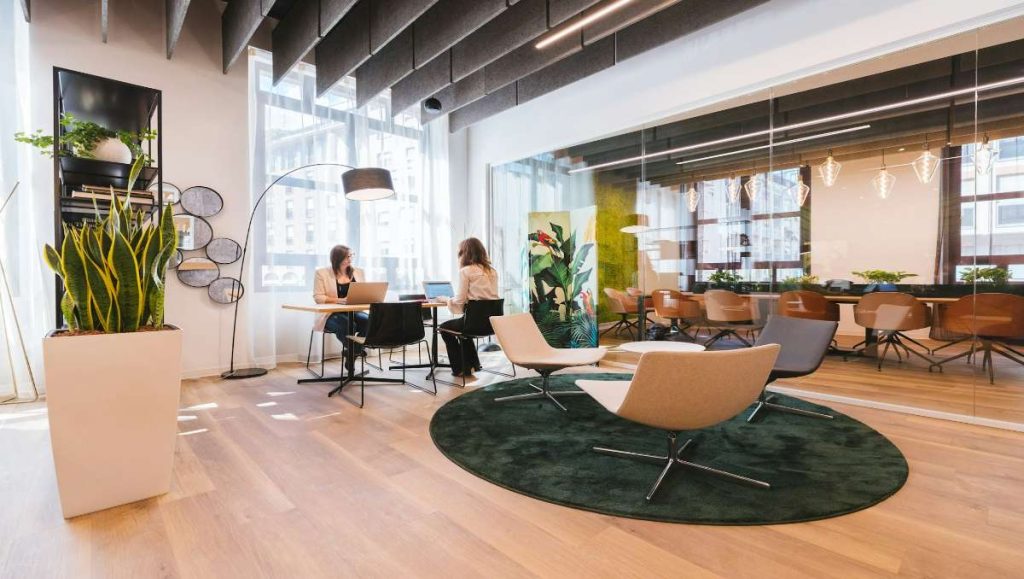
Here are some etiquette tips for shared office furniture:
- Respect personal workstations.
Avoid taking a chair from someone’s desk if they are just away for a moment, as it can disrupt their workflow upon return.
- Adjust chairs thoughtfully for the next user.
While it’s natural to adjust a chair to your personal comfort, try to leave it in a neutral or easily adjustable position (e.g., mid-height) when you’re done.
- Keep shared furniture clean and tidy.
Avoid leaving food crumbs, spills, or personal belongings on shared chairs and tables.
Looking to replace your broken office chair? Explore our collection of modern ergonomic chairs designed to provide the support and comfort you deserve.
Temporary Fixes You Can Do (If Appropriate)
In a pinch, there are a few temporary fixes you can attempt with shared office chairs, provided the issue is minor and you have the tools readily available. For instance, if a chair feels a bit wobbly, you might be able to tighten loose screws on the armrests or base using a standard Allen key or screwdriver, often found in a common office toolkit. Similarly, if the recline tension is too loose or too stiff, many chairs have a knob underneath the seat that allows you to adjust the tilt tension, making it easier or harder to lean back.
However, it’s crucial to understand when to avoid DIY fixes. Never attempt a repair if it involves dismantling complex parts of the chair, especially the gas lift mechanism, as these can be under high pressure and pose a safety risk. In such cases, attempting a DIY fix could not only void warranties but also lead to further damage, or worse, cause injury to yourself or future users.
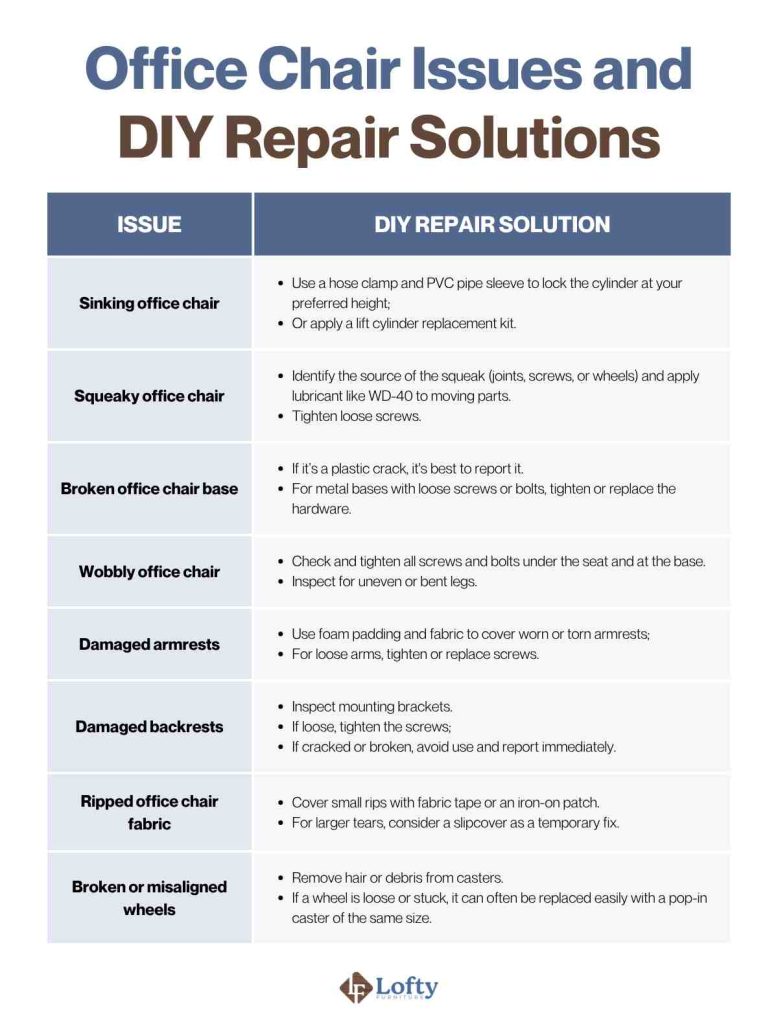
Preventing Future Issues with Shared Chairs
To keep shared office chairs in good shape, develop simple habits. After use, return the chair to a neutral position—mid-height, upright back, and centered armrests—to reduce wear on the mechanisms and keep it ready for the next user. Also, keep food and drinks away from the chair. Spills and crumbs can clog wheels and damage internal parts. Clean up any messes right away and check regularly for debris around the base.
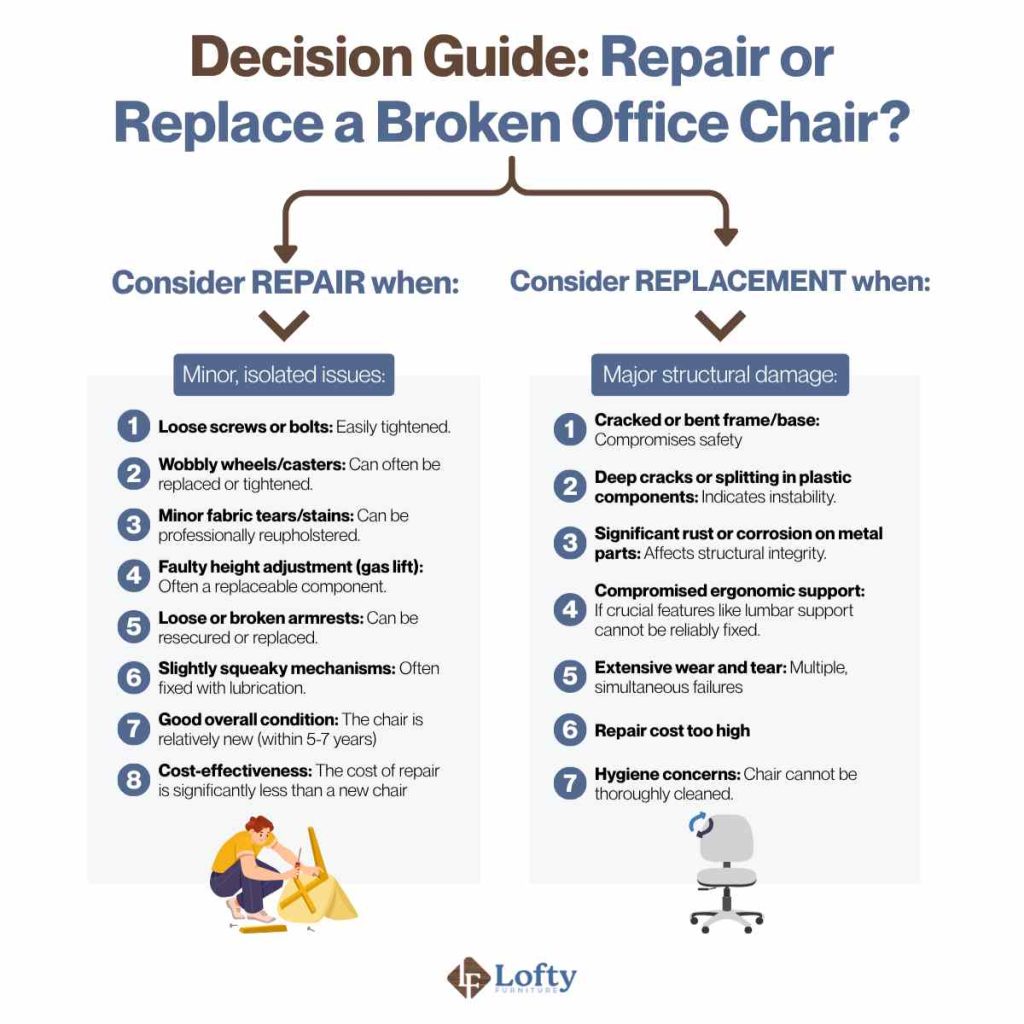
Conclusion: Keeping Shared Workspaces Safe and Comfortable
A broken office chair may seem like small inconveniences, but in a shared office or coworking space, they reflect bigger themes: responsibility, communication, and the importance of a well-maintained environment. When everyone takes an active role in spotting issues and resolving them, the space becomes not only more functional but also more respectful and enjoyable for all who use it. In the end, maintaining a safe, ergonomic, and comfortable workspace isn’t just about furniture—it’s about creating a culture of care in the spaces we share.
Frequently Asked Questions
What are the risks of a broken chair?
Using a broken chair poses several risks, primarily physical injury from falls or instability, especially if the base or height adjustment is compromised. It can also lead to discomfort and ergonomic issues, potentially causing back pain, strain, or other musculoskeletal problems due to improper support.
Are coworking spaces legally responsible for injuries caused by broken furniture?
Responsibility can vary by location and the terms of the coworking agreement, but generally, operators are expected to maintain a safe environment. If a chair is visibly faulty and causes injury, there could be liability involved.
What are the most common causes of a broken office chair in coworking spaces?
Frequent, varied use by multiple users can lead to wear and tear faster than in private offices. Common causes include overloading, rough handling, poor-quality components, and simply the passage of time.
